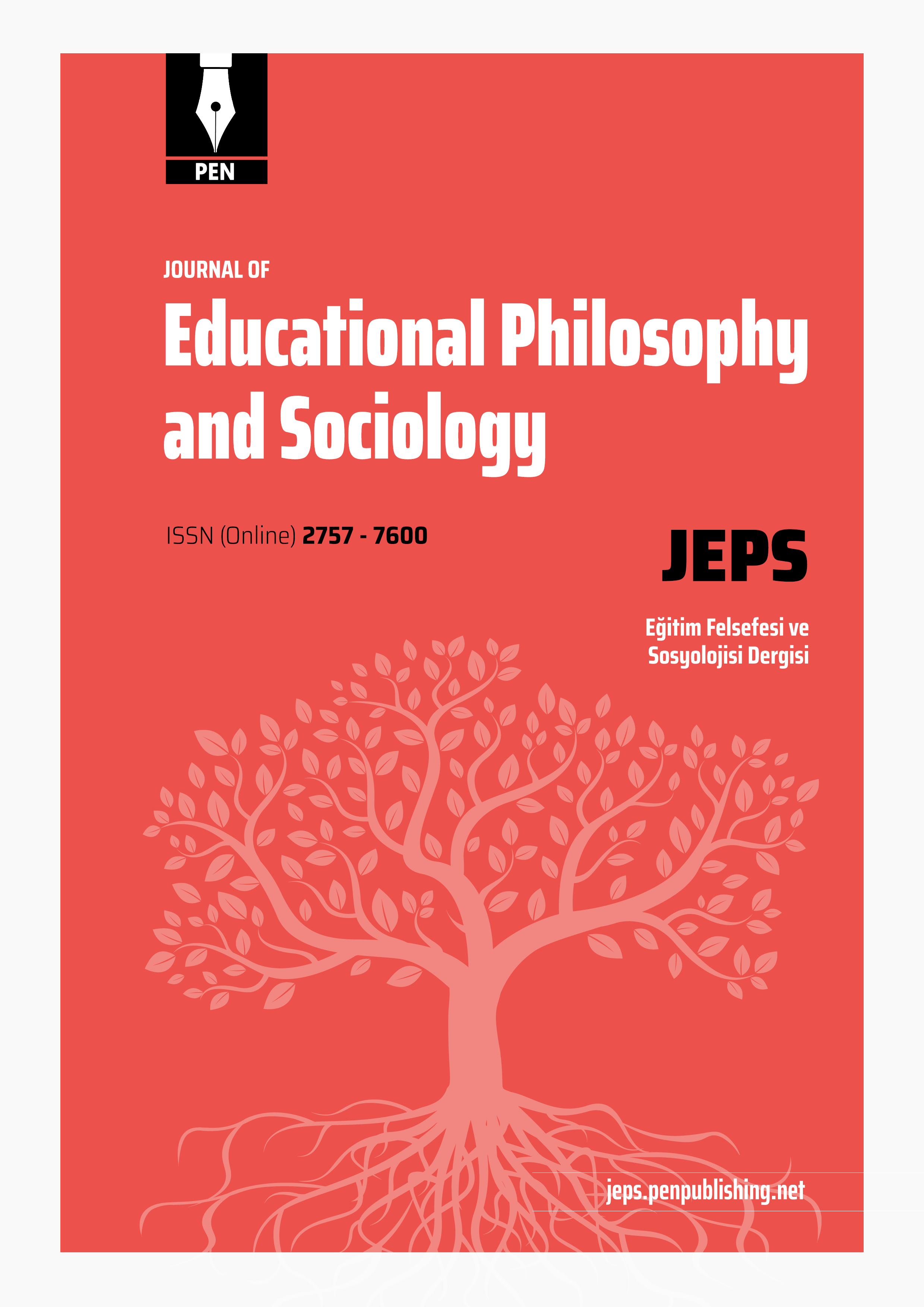- Aguilera, D., & Ortiz-Revilla, J. (2021). STEAM education: A systematic literature review. Education Sciences, 11(8), 1–23. https://doi.org/10.3390/educsci11080404 [Google Scholar] [Crossref]
- Alkış Küçükaydın, M., & Akkanat Avşar, S. (2025). Adaptation of the Science Classroom Creativity Scale (SCC) to Turkish culture and its validation study. Unpublished manuscript. [Google Scholar]
- Amabile, T. M. (1996). Creativity in context: Update to the social psychology of creativity. Westview Press. [Google Scholar]
- Barak, M. (2013). Impacts of learning inventive problem-solving principles: Students’ transition from systematic searching to heuristic problem solving. Instructional Science, 41(4), 657–679. https://doi.org/10.1007/s11251-012-9250-5 [Google Scholar] [Crossref]
- Beghetto, R. A. (2016). Creative learning: A fresh look. Journal of Cognitive Education and Psychology, 15(1), 6–23. https://doi.org/10.1891/1945-8959.15.1.6 [Google Scholar] [Crossref]
- Beghetto, R. A., & Kaufman, J. C. (2014). Classroom contexts for creativity. In M. Kaufman (Ed.), Creativity and innovation in the classroom (pp. 27–41). Cambridge University Press. [Google Scholar]
- Craft, A. (2015). Creativity and education futures: Learning in a digital age. Trentham Books. [Google Scholar]
- Demirhan, E., & Köksal, M. S. (2021). The effects of collaborative inquiry-based science teaching on students’ science process skills and creative thinking. Science Education International, 32(3), 217–226. [Google Scholar]
- Edmondson, A. (1999). Psychological safety and learning behavior in work teams. Administrative Science Quarterly, 44(2), 350–383. https://doi.org/10.2307/2666999 [Google Scholar] [Crossref]
- Fosterk, S., & Silverman, L. (2015). The affective side of giftedness: How teachers can support emotional development. Gifted Child Today, 38(3), [A1][A2]125–131. https://doi.org/10.1177/1076217515583742 [Google Scholar] [Crossref]
- Ghahremani, A., Karami, A., & Shirkhani, S. (2022). Collaborative creativity in gifted learners: A process–outcome framework. Journal of Advanced Academics, 33(4), 301–324. https://doi.org/10.1177/1932202X221107375 [Google Scholar] [Crossref]
- Hong, E., & Song, Y. (2020). Creativity in science classrooms: An ecosystemic framework. Educational Psychology Review, 32(2), 495–523. https://doi.org/10.1007/s10648-019-09508-5 [Google Scholar] [Crossref]
- Hong, E., Choi, I., & Song, Y. (2022). Development and validation of the Science Classroom Creativity (SCC) scale. Journal of Creative Behavior, 56(4), 1083–1101. https://doi.org/10.1002/jocb.531 [Google Scholar] [Crossref]
- Isaksen, S. G., & Treffinger, D. J. (2004). Celebrating 50 years of reflective practice: Versions of creative problem solving. The Creative Problem Solving Group, Inc. [Google Scholar]
- Karnes, F. A., Stephens, K. R., & Whorton, J. E. (2004). Teacher behaviors that encourage creativity in gifted students. Gifted Child Today, 27(3), 38–44. [Google Scholar]
- Kim, K. H., Cramond, B., & VanTassel-Baska, J. (2023). Effects of STEAM instruction on creativity in culturally diverse gifted students. Roeper Review, 45(2), 102–116. [Google Scholar]
- Konkuş, Y., & Topsakal, Ü. (2022). The impact of STEAM activities on gifted students’ teamwork and attitudes: A mixed-methods approach. Journal of Science Learning, 5(1), 39–51. https://doi.org/10.17509/jsl.v5i1.47681 [Google Scholar] [Crossref]
- Lage-Gómez, C., & Ros, C. (2023). Transdisciplinary learning and creativity development in gifted education: Findings from a three-year STEAM program. Gifted Education International, 39(1), 55–70. https://doi.org/10.1177/02614294221145632 [Google Scholar] [Crossref]
- McLean, L. (2015). The learning environment and its impact on the development of creative thinking: A review of literature. International Journal of Education and the Arts, 16(13), 1–24. [Google Scholar]
- Mercin, L. (2019). Interdisciplinary creativity in the visual arts. In Özer, S., & Demirbatır, E. (2023). Creativity and interdisciplinary education in the 21st century (pp. 97–111). Pegem Akademi. [Google Scholar]
- OECD. (2018). The future of education and skills: Education 2030 framework. OECD Publishing. https://www.oecd.org/education/2030/ [Google Scholar]
- OECD. (2019). Fostering students’ creativity and critical thinking: What it means in school. OECD Publishing. https://doi.org/10.1787/62212c37-en [Google Scholar] [Crossref]
- Özgün, D., & Korkmaz, Ö. (2022). The impact of STEAM practices on gifted students’ scientific creativity and self-efficacy. Journal for the Education of Gifted Young Scientists, 10(1), 1–18. https://doi.org/10.17478/jegys.1052681 [Google Scholar] [Crossref]
- Park, H., Byun, Y. C., & Kim, K. J. (2019). Effects of maker-centered science learning on middle school students’ creativity and perceptions of the science classroom environment. Asia-Pacific Science Education, 5(6), 1–24. [Google Scholar]
- Paulus, P. B., & Nijstad, B. A. (Eds.). (2019). The Oxford handbook of group creativity and innovation. Oxford University Press. [Google Scholar]
- Sarıtepeci, M. (2020). The effect of project-based learning on students’ academic achievement, attitude and motivation in science courses: A meta-analytic and thematic review. Educational Sciences: Theory and Practice, 20(1), 124–143. [Google Scholar]
- Sawyer, R. K. (2007). Group genius: The creative power of collaboration. Basic Books. [Google Scholar]
- Sawyer, R. K. (2011). Explaining creativity: The science of human innovation (2nd ed.). Oxford University Press. [Google Scholar]
- Stinkeste, J., van der Velde, H., & van Aalderen-Smeets, S. (2021). Co-creativity and emotional safety in primary school STEAM projects: The role of team climate. Creative Education, 12(3), 512–529. https://doi.org/10.4236/ce.2021.123036 [Google Scholar] [Crossref]
- Sun, K., Wu, Y., & Tsai, M. (2020). Enhancing creativity in gifted students through maker-centered learning. Journal of Advanced Academics, 31(2), 137–170. https://doi.org/10.1177/1932202X19887498 [Google Scholar] [Crossref]
- Timotheou, M., & Ioannou, A. (2021). Collective creativity in maker education: Elementary students working with arts and technology to create musical instruments. Thinking Skills and Creativity, 40, 100831. https://doi.org/10.1016/j.tsc.2021.100831 [Google Scholar] [Crossref]
- Tran, M. T., Le, H. T., & Nguyen, Q. V. (2021). Integrating STEAM to promote creativity in middle school students: A case study from Vietnam. Frontiers in Education, 6, 702712. https://doi.org/10.3389/feduc.2021.702712 [Google Scholar] [Crossref]
- Ülger, B., & Çepni, S. (2020). Effect of STEM activities on gifted students’ attitudes and creativity. Journal of Gifted Education and Creativity, 7(2), 97–111. [Google Scholar]
- van Tassel-Baska, J. (2018). Curriculum planning and instruction for gifted learners (3rd ed.). Prufrock Press. [Google Scholar]
- Yoon, S. A., Evans, C. A., & Strobel, J. (2014). Validation of the Design-based Learning model in STEM education. Educational Technology & Society, 17(3), 77–88. [Google Scholar]
- Zhang, Y., Wang, W., & Liu, X. (2021). Distributed creativity in interdisciplinary learning: A multilevel analysis in Chinese STEAM classrooms. Journal of Creative Behavior, 55(2), 293–309. https://doi.org/10.1002/jocb.442 [Google Scholar] [Crossref]
|
